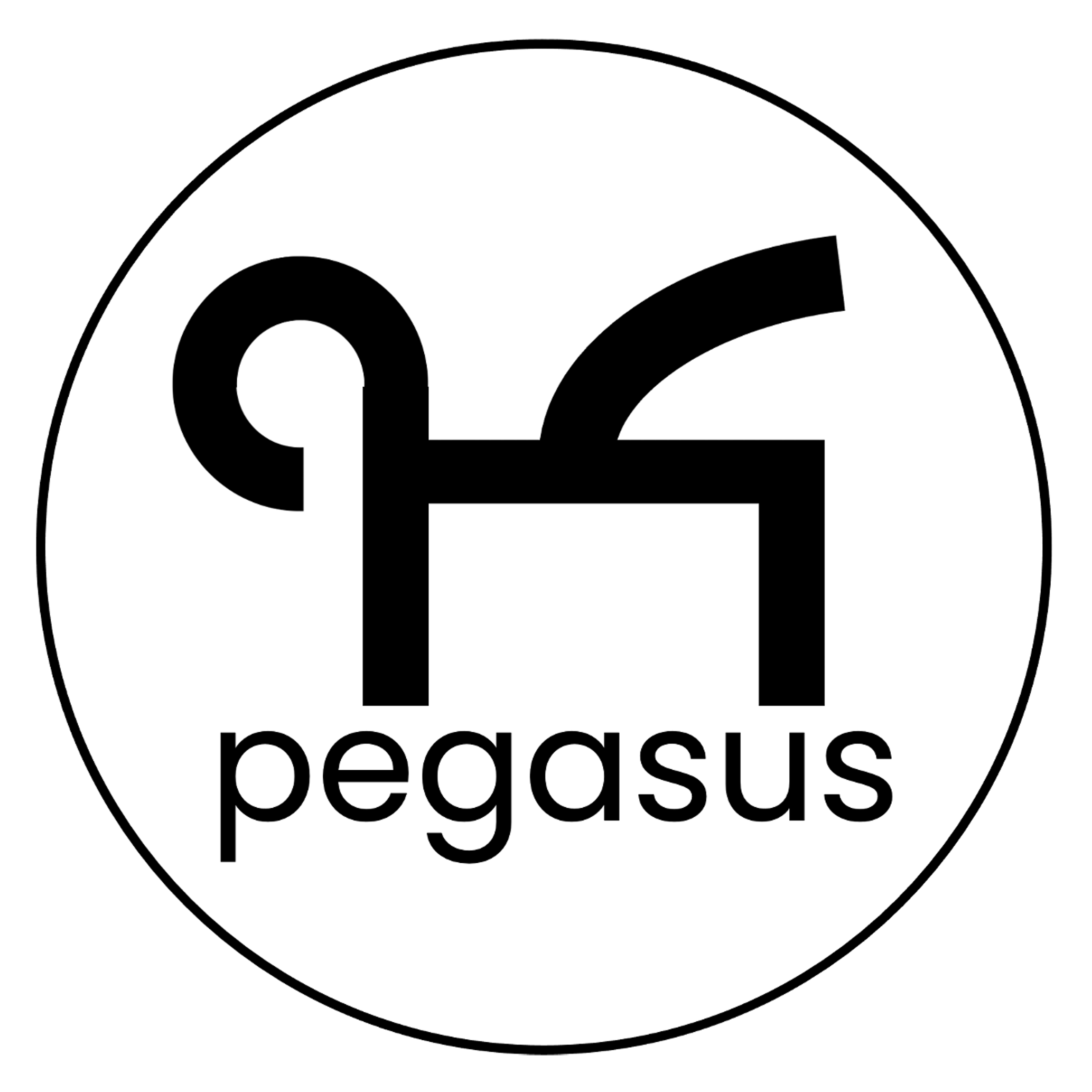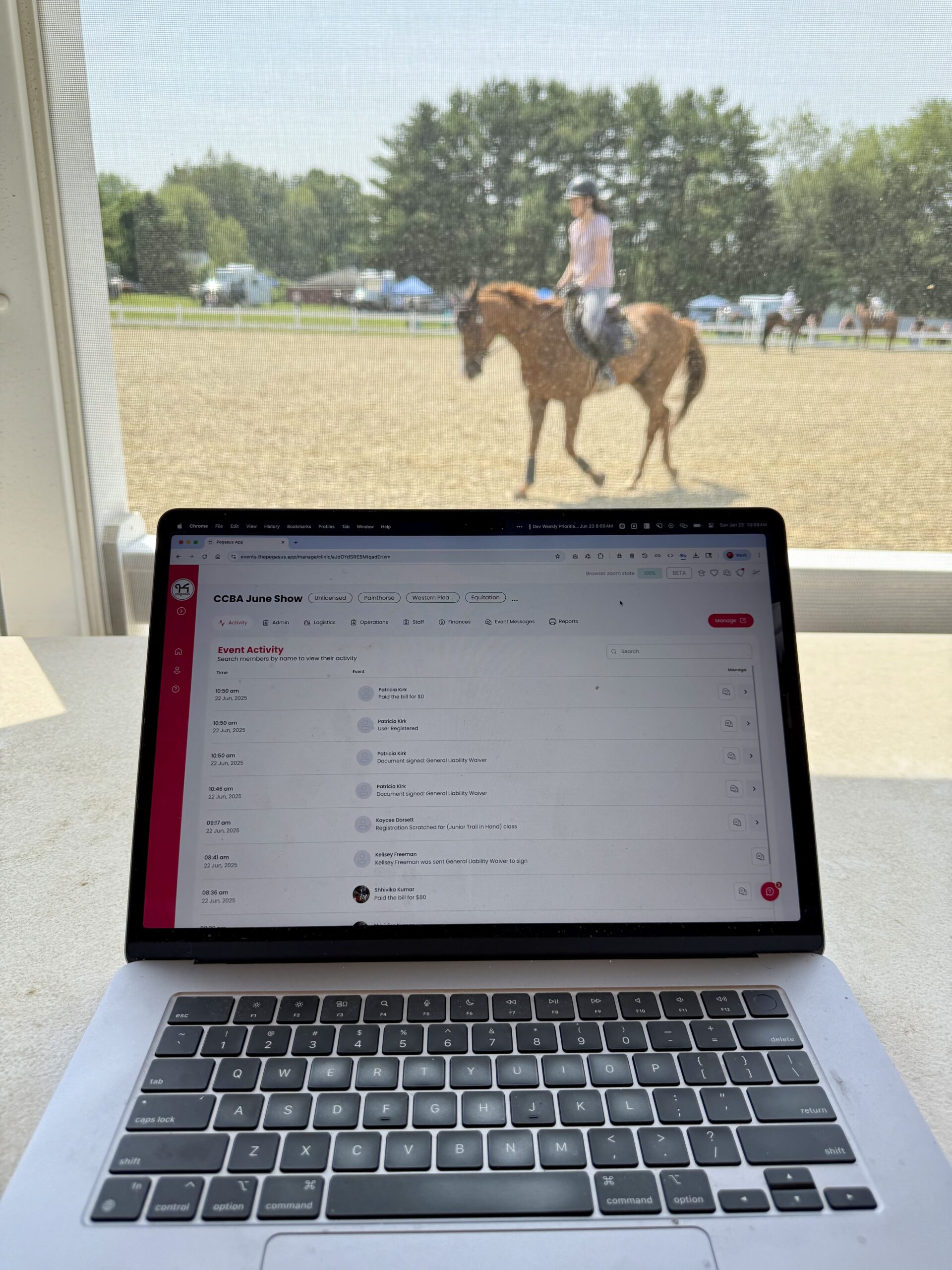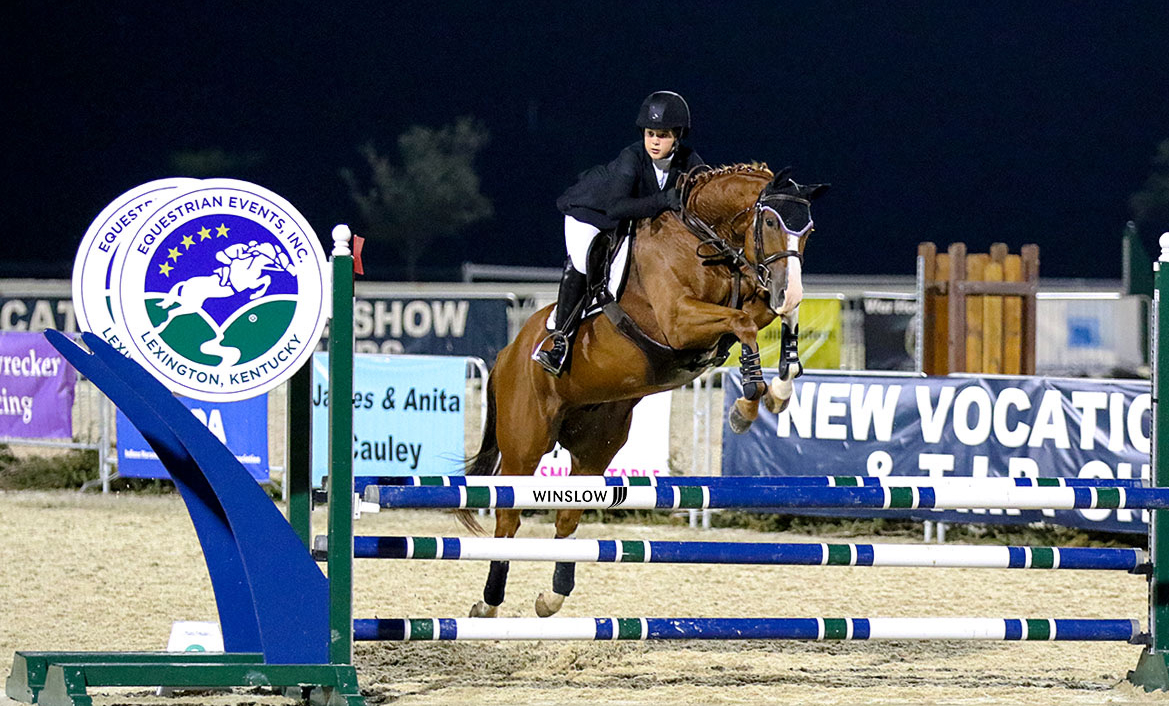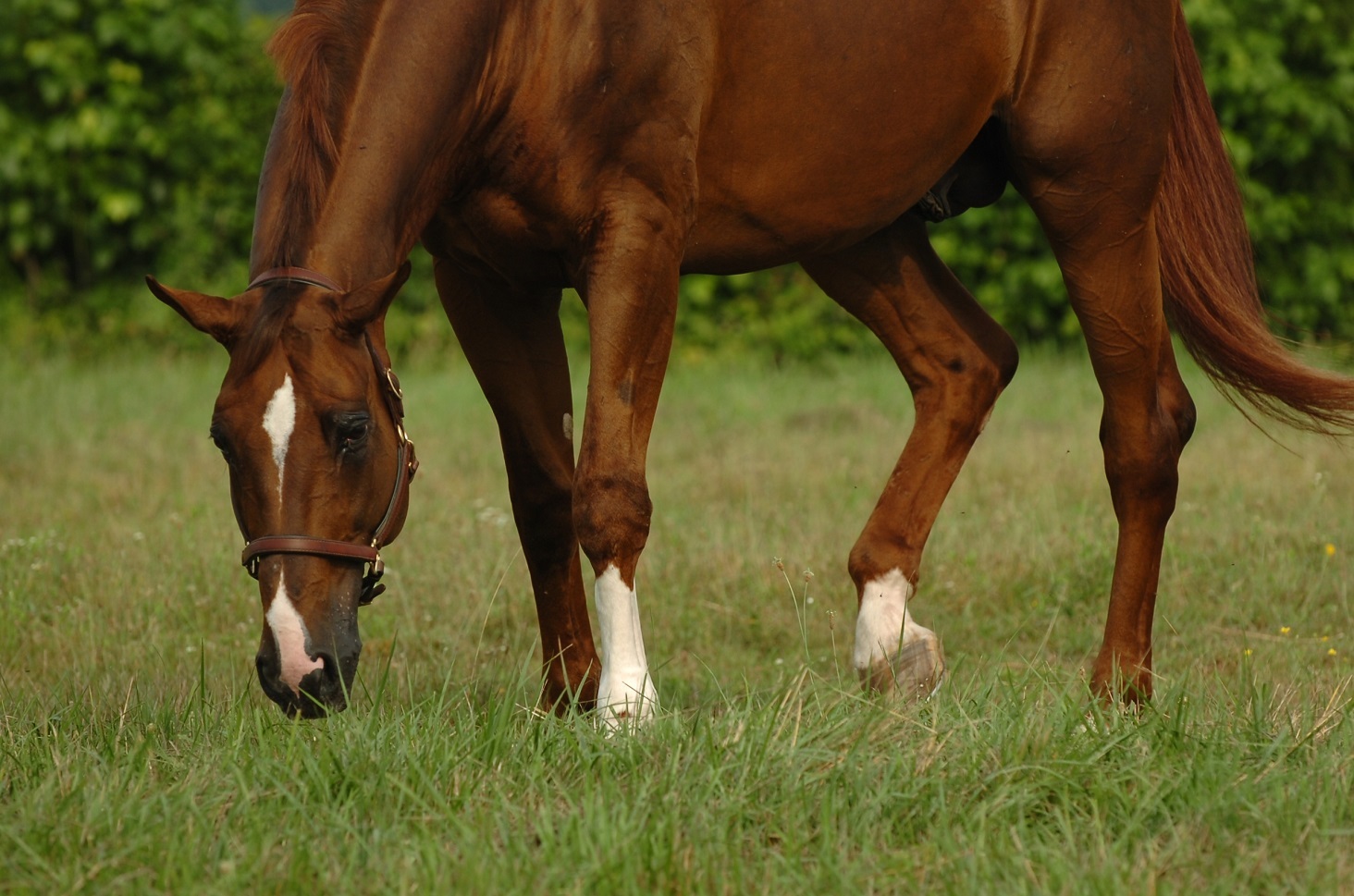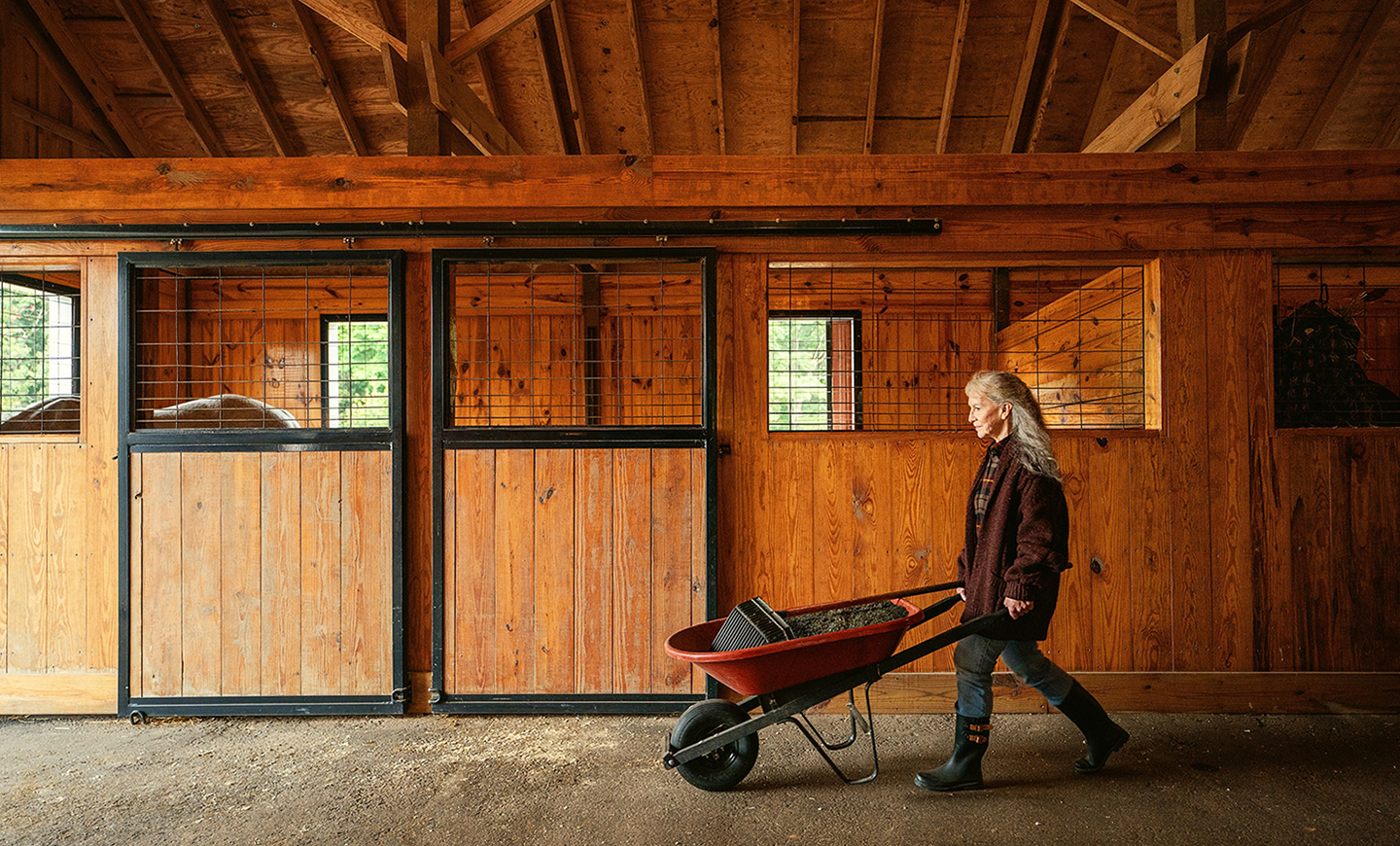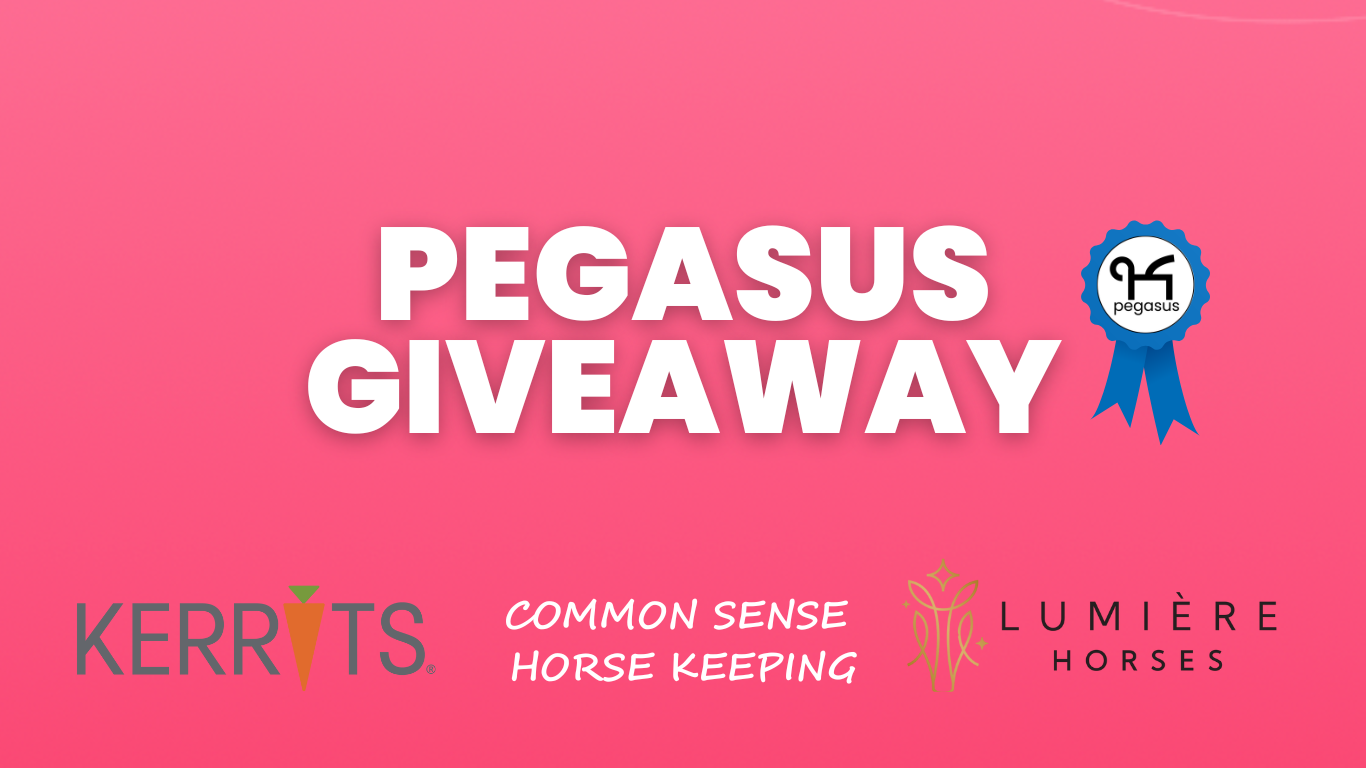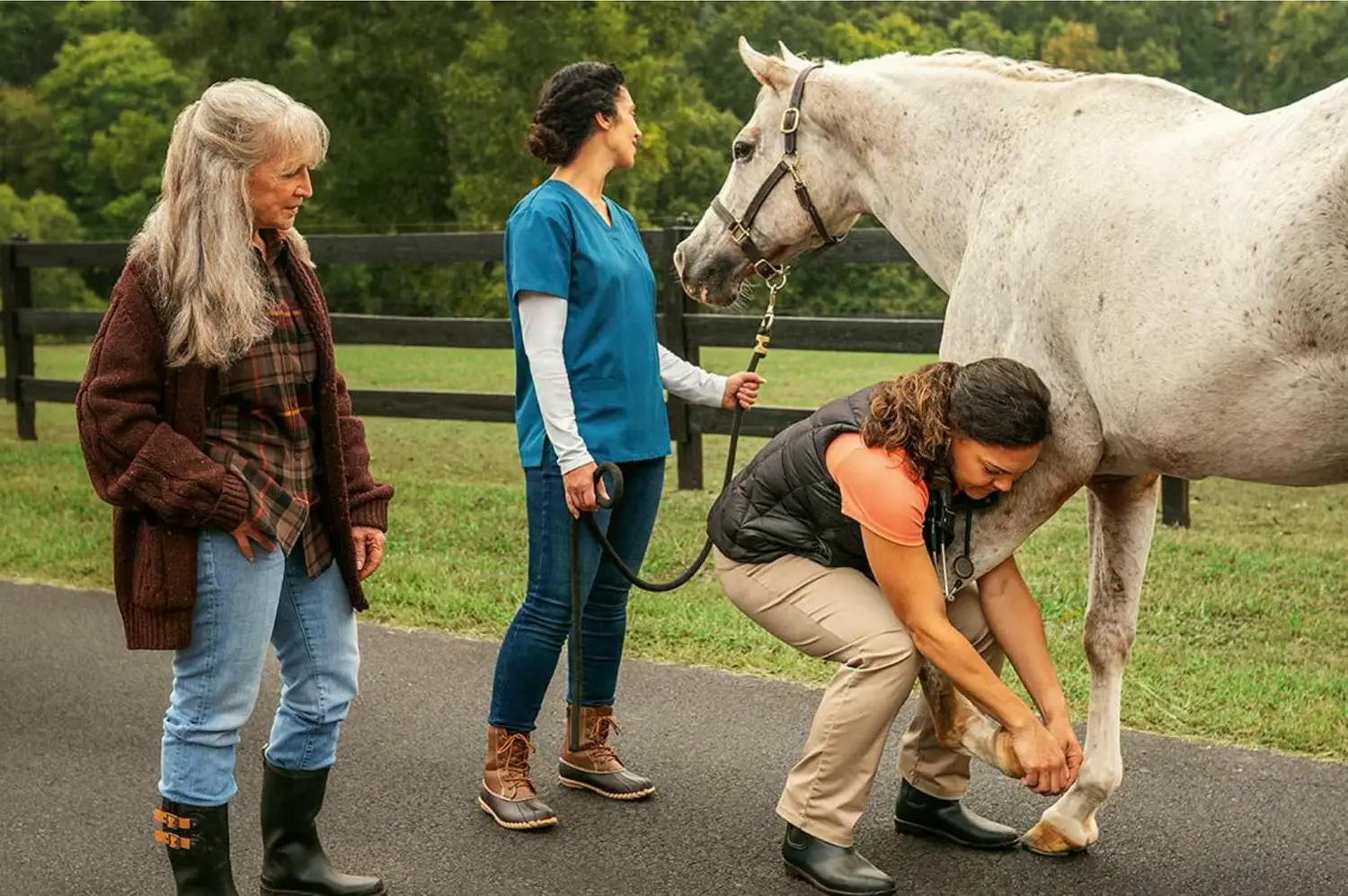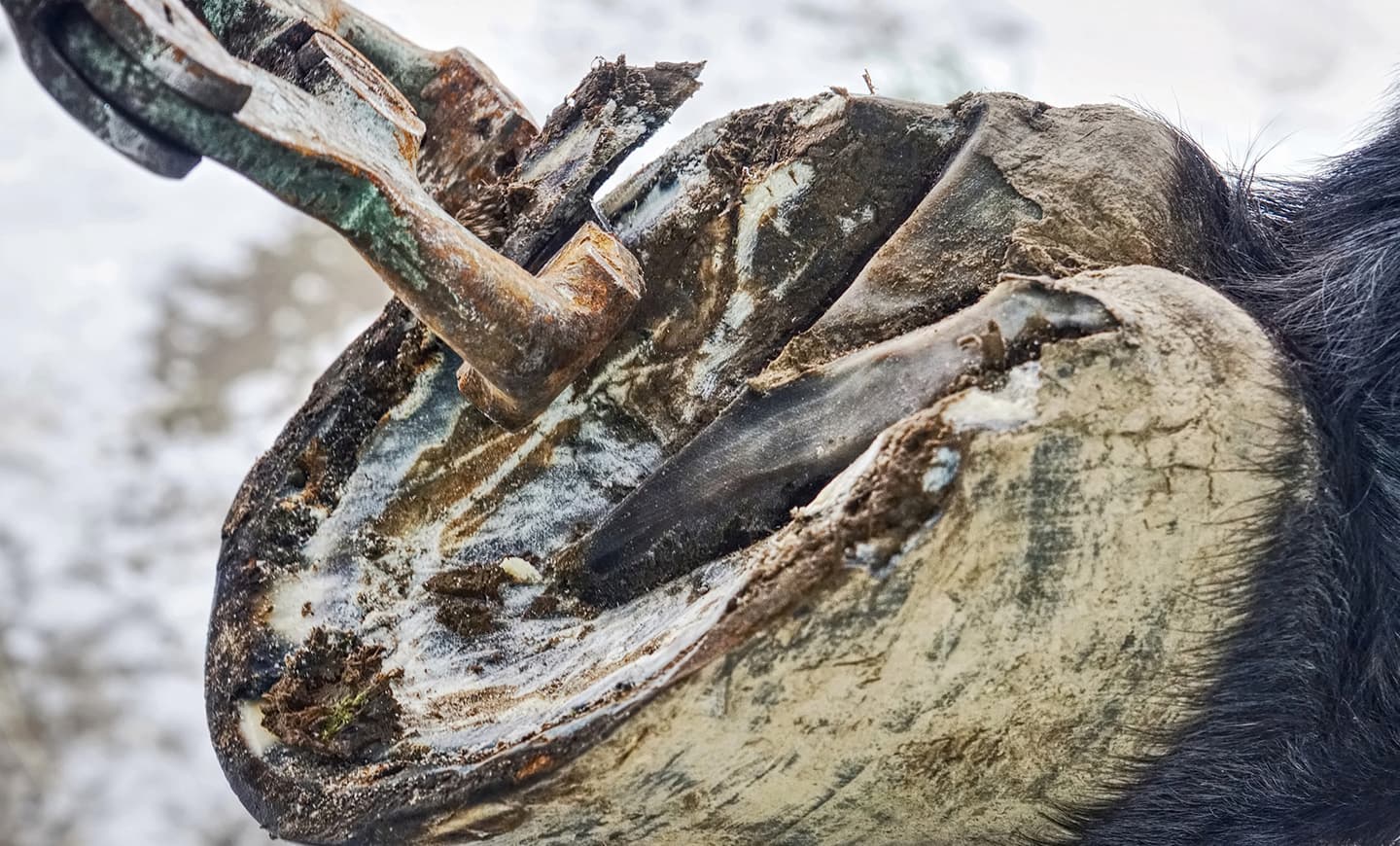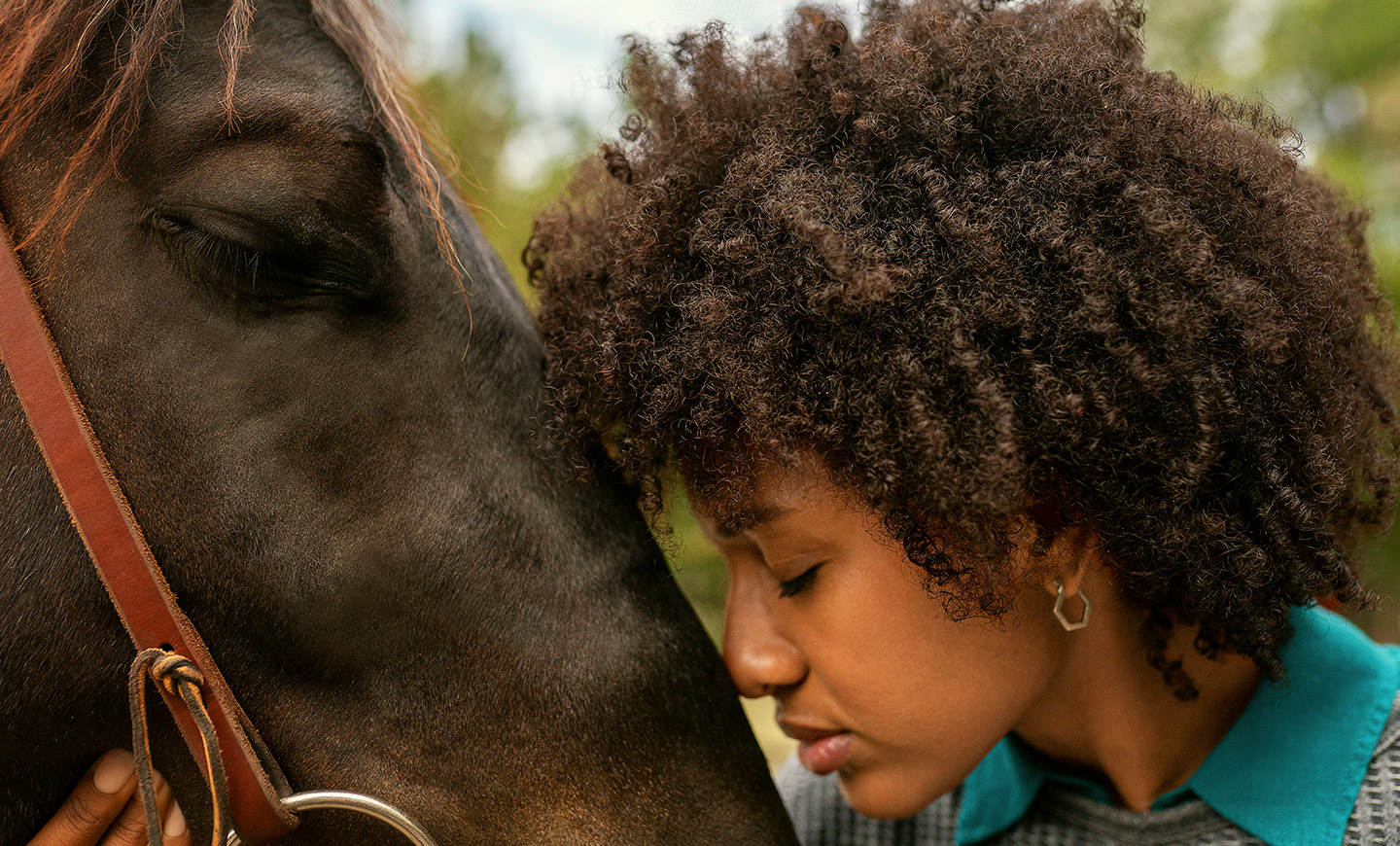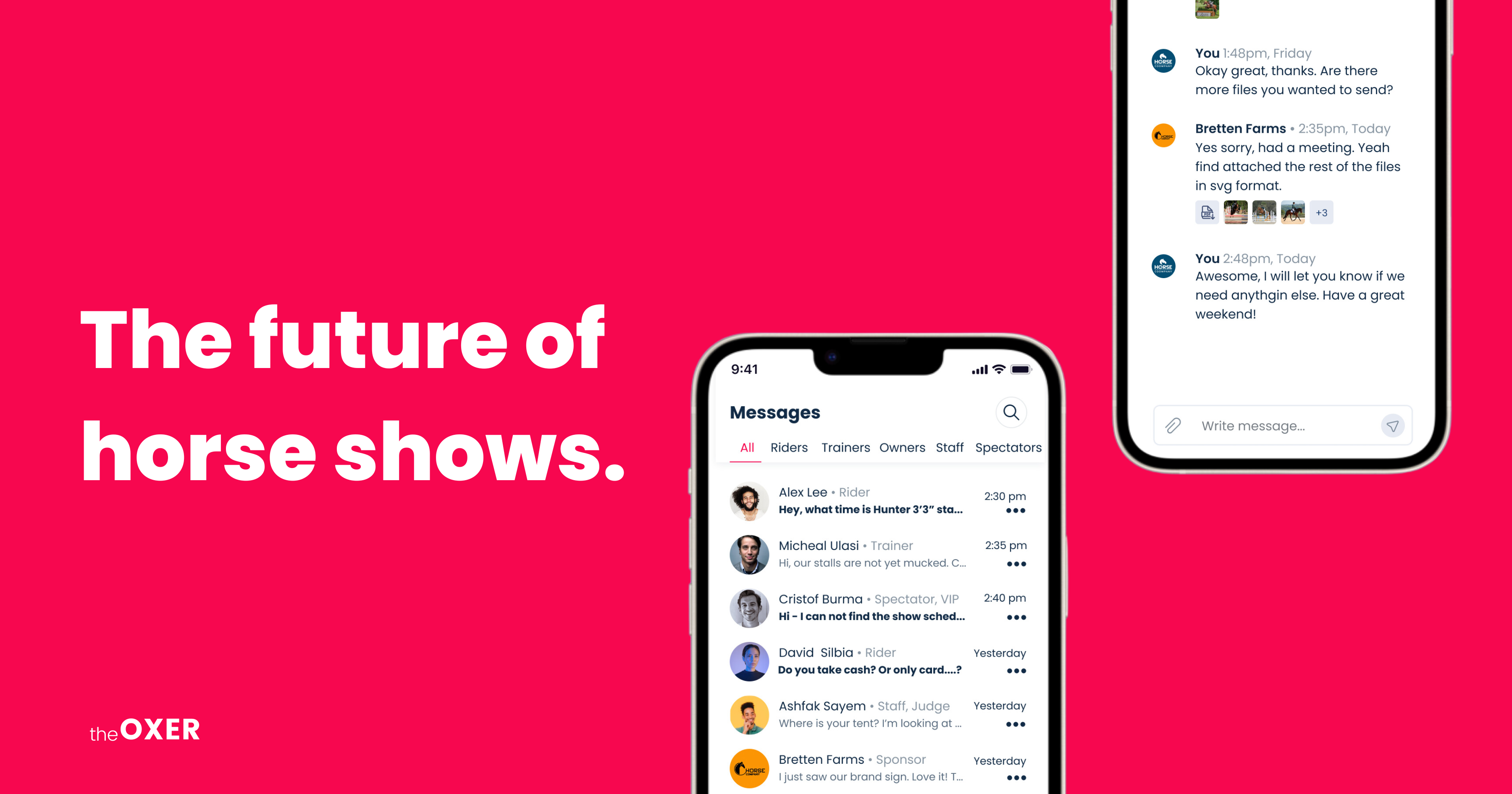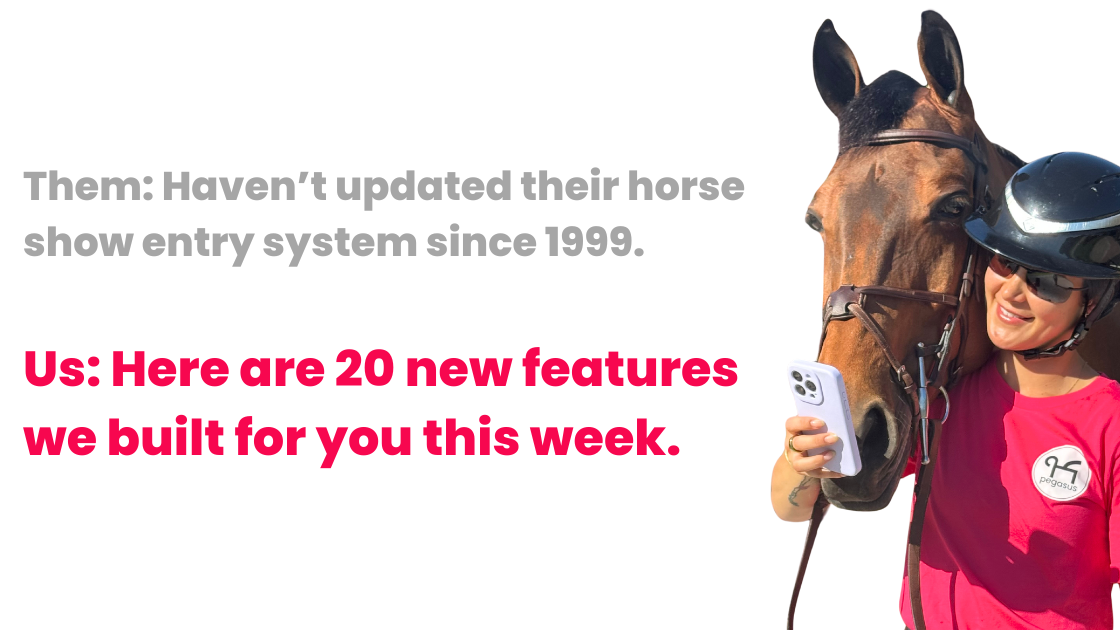Hey there, LinkedIn. This is The Oxer by Pegasus. The newsletter that takes you out of your tack room and into the global equestrian industry.
This week, we published our podcast with reining superstar and mega influencer Jim Greendyk.
In today’s edition, we want to highlight some reflections we had during and after our conversation with Jim.
Before we get into it, have you signed up to try out Pegasus’s beta?
If not, head to Pegasus, click “get early access,” and sign up today!

Saddle up for some reining and marketing lessons!
😬 Don’t Stress So Much About Having a Content Creation Plan
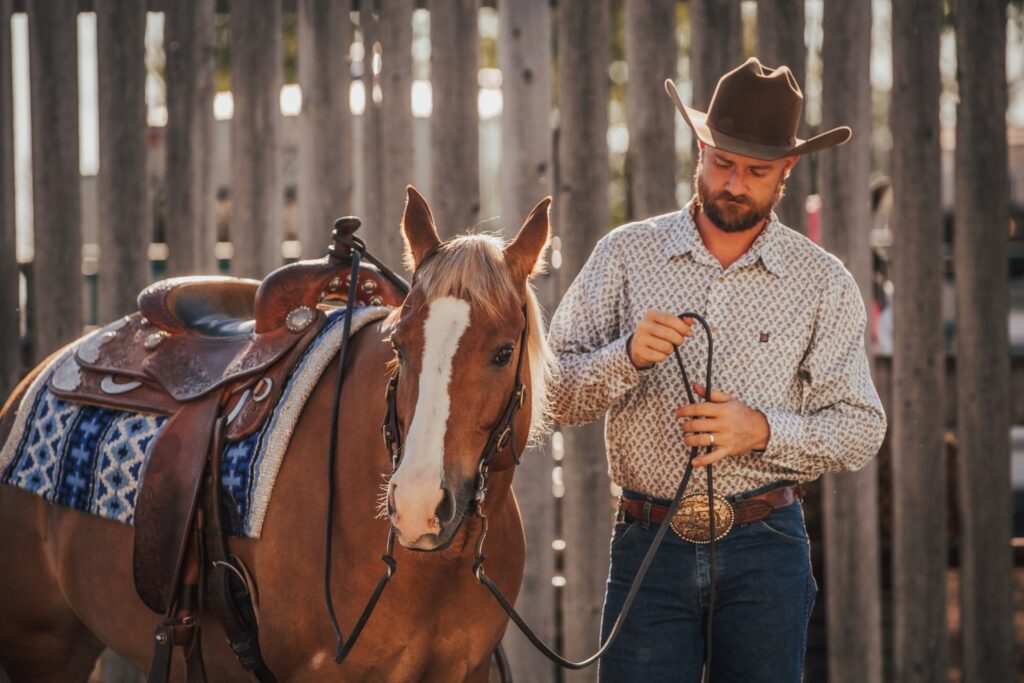
An insight that we all found quite surprising was that Jim doesn’t have a content creation plan.
On the show, cohost and Pegasus cofounder Jen Tankel asked Jim about how he goes about planning what he posts to his following on Instagram.
Jim’s response?
“I make shit up as I go.”
He continues below.
I've always thought as soon as you make a big plan, you take away the creativity, you take away the flexibility, you take away the ability to say what's on your mind because you're just staying with those bullet points. And I am not good at that. I'm very comfortable with making up things as we go. If you do it for 20 years, any discipline, any sport, any art were to soak into you for 20 years, promise me: it just soaks back out of you again
Jim Greendyk
This was very refreshing for us to hear as a brand that takes on a lot of pressure to publish many content assets on a weekly basis, whether it be The Pegasus Podcast, The Oxer by Pegasus, or our Instagram posts.
With that being said, do note what Jim said at the end of his quote about grinding for 20 years.
It took Jim 20 years of working hard every day to have the knowledge that he has now for sharing things so easily that he doesn’t even need to plan what he says.
If you’re someone who doesn’t have a lot of knowledge or experience in the domain that you are creating content on, maybe it’s better that you have a content creation plan so that you can plan time to do research and validate the information you’re about to tell your audience.
But if you’re as experienced as Jim is, you should have the capability to talk to anyone about your subject matter at ease.
⍯ Social Media Fame Doesn’t Always Equal Success

Just because someone is big on social media doesn’t mean that they’ve actually done anything beyond that.
Someone can create a TikTok account and grow to 200k subscribers which is certainly impressive: they knew how to build an audience.
Yet there’s so much more that goes into that.
Jim advises on the show that you probably won’t get anywhere if you’re making social media content for the sake of being famous.
If you go after it just for content creation or just for the fame...I say this all the time that people start to meet me at horse shows now and kids come up and want to take pictures and all that stuff. And it's the first thing I say is, I just come and say hi because I don't give a shit about the Instagram fame. It's empty. If you're just after it for being famous, it's worth nothing. And some guy in Pakistan is going to hack your Instagram and you're going to have to start all over.
Jim Greendyk
Jen expands on his insight that Jim is using his content the way a marketer would at a tech company: by having it create demand to use Jim’s products and services, whether that be his Reining Masterclass or a spot at one of his many clinics.
In marketing, a big conversation today thanks to entrepreneurs like Chris Walker of Refine Labs is the need for companies to create demand, or using marketing as a way to make people desire what you’re selling and have them attracted to your product.
You can argue that Jim’s years-long effort in creating content on Instagram is a tactic of his demand-creation strategy. He’s talking directly to riders who are looking to improve and shares the exact techniques he does and how to do them.
Take this video on the outside rein as an example.
Jim Greendyk Horses on Instagram
Jim clearly tells his audience in the video the importance of the outside rein and using it to get your horse to move around where you want them to.
Imagine sharing easily digestible videos like that daily for three years in a row.
Inevitably, you’re going to create a community of people who want to vet you for your training services because they know that you can teach them since you have been teaching them indirectly via your Instagram.
Instagram is his way of sharing his training for free so that some of the people who follow it could convert from being followers to being purchases of his masterclass or reining lessons and clinics.

💸 Instagram Costs a Lot More Than You Think

Well, let’s rephrase the last sentence in the previous section: Instagram is not free, it actually costs thousands a month if you want to do it properly.
Jim mentioned on the show that he began his journey making professional-looking Reels by hiring a video editor for $2,700 per month.
He and his wife decided to give it a test run for 90 days to see what would happen and the account ended up taking off.
They were posting high-quality videos seven days a week.
Perhaps it seems contradictory that Jim doesn’t have a content creation plan yet spends a lot of money on his content.
Why does Jim need to spend so much money on content if much of it, if not all of it, is improvised?
It’s because of production quality: especially visual quality.
People see [the Reel] first, you open it and you see it going before you ever turn the sound on and think, oh, I think I'd like to actually listen to this one, unless you're one of those people that listens to everything with the microphone or with the sound always on, and then you just go from one sound clip to the next. And they'll watch something after they've seen the quality of the video. So, the editing, the quality of the video, the lighting, it has to be right. Because that's what people see first.
Jim Greendyk
Jim rightfully points out that on apps like Instagram Reels, you have to turn on the sound to listen.
Reverse engineering the process, someone had to be interested enough in the video to tap on it and to turn on the sound, and the visual engagement of the video must be appealing enough for that person to watch the full thing.
What Jim is saying in his videos is just as important because a user can exit his videos as quickly as they open them.
Yet it’s the visuals that bring the user in first.
Thanks a lot to Jim for sparking the conversation and be sure to listen to the full episode on Apple, Spotify, or wherever you listen to your podcasts.
Time for some (stall) rest,
The Oxer by Pegasus
Note: All images including the one used in the cover photo were provided by Jim Greendyk.
